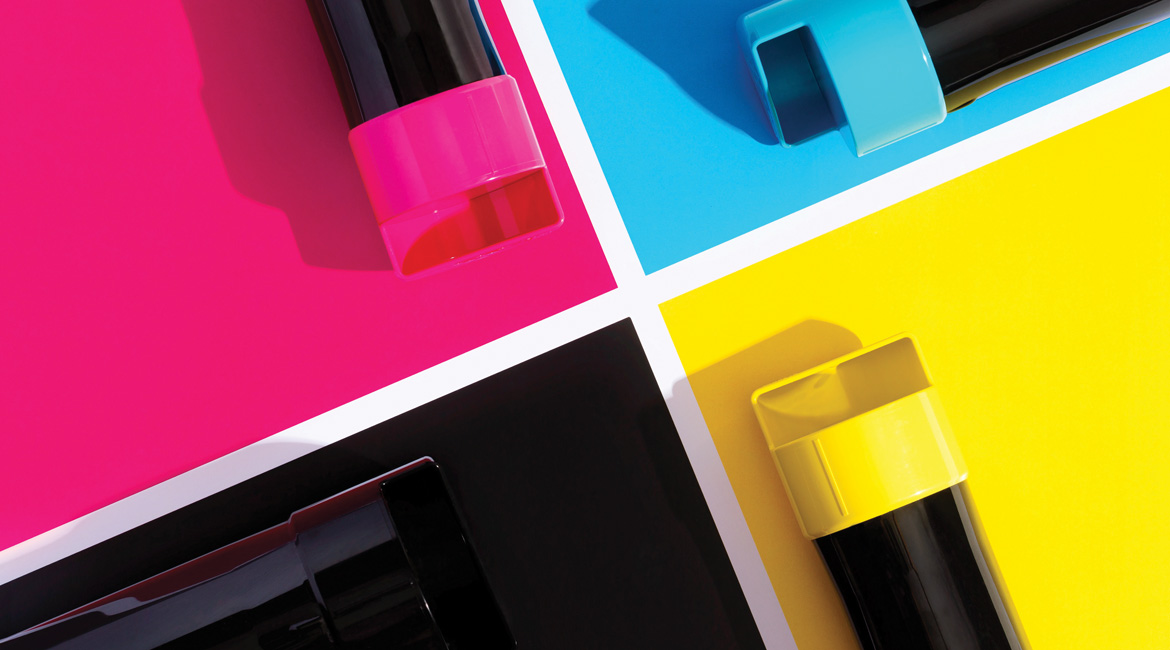Actionable Intelligence’s Charlie Brewer recaps 2022.
If you want an update on the supplies and consumables market, look no further than Charlie Brewer, president of Actionable Intelligence, a research firm that tracks the imaging hardware and supplies markets. Recently, I sat down with Brewer to discuss the year in supplies and consumables. Here’s what he had to say about the trends, companies to watch, and some of the high-profile lawsuits that are commonplace in the supplies segment of the industry.
The Supply Chain
I’m sure you hear about supply chain issues from everybody. That is starting to abate some for hardware and supplies vendors. Someone told me it’s like if you go to a car dealership. You’re not going to find every car you might want, but if you want to get a car, you can get a car. Same with hardware. You want a machine; you can get a machine, but it may not be exactly what you want.
There have been shortages on the supply side. Initially, they were mainly inkjet. But that stabilized over a year ago when demand for ink cartridges began declining. Now, demand for inkjet hardware and supplies has fallen off as expected. When people first started working from home, they bought an inkjet printer and a set of supplies. That blew everybody away. No one expected demand in inkjet to explode in early 2020. And then, because people couldn’t get OEM cartridges, they tried to get third-party cartridges, and they couldn’t get refills because there weren’t enough OEM empties. Everybody making ink cartridges—OEM and third party—got a bump. But now, that’s gone away and the inkjet category is declining again.
Issues around toner have not been as dynamic. There have been spot shortages. And some individual companies have had issues. Overall, however, toner markets have been more stable.
Companies to Watch
We’ve been watching Konica Minolta. In terms of consumables, that company took a real hit after a couple of fires strained its toner production capabilities. We heard that dealers have had to struggle with that. I’ve also heard from third-party vendors that they’ve seen good demand for Konica Minolta product, and we expect that to continue. Typically, once customers cross the Rubicon and start using third-party supplies, they won’t return to the OEM unless they have a catastrophic problem.
Of course, in the dealer channel, there are all kinds of incentives that OEMs can use to get their customers back. For end-users, if it looks good and the product works well, they don’t care where it came from. Konica Minolta may ultimately have a bit of an uphill fight to win dealers back. I suspect the company will be weighing its options: How much carrot? How much stick?
A company that is doing well in terms of supplies is HP. The company has been dogged by declining consumables revenue, but it’s been able to tweak the industry’s razor-and-blade model so it makes a healthy profit even with declining sales. HP’s printing business is getting great margins these days, and that’s due in no small part to new supplies programs like HP’s subscription services. You probably heard a lot about Instant Ink. That has over 11 million users. It’s been very popular, especially since COVID. But even before COVID, that was growing. They have HP+, which isn’t a subscription service but allows it to put a wall around HP’s installed base. You can’t use third-party cartridges in HP+ machines. That program is working for HP, too, and it will become more and more of an issue for the third-party guys in the future. And HP says it gets better margins on HP+ machines.
Another company that we’ve followed closely on the supplies side this year is Clover. We estimate that Clover’s revenue is still declining like it has for years. The company had to pull out of Europe in 2022, and that was a big deal. But, regardless of Clover’s declining revenue, there’s a market for remanufactured cartridges. And we forecast that, in time, demand for reman will increase.
Clover remains the 800-pound reman gorilla in North America. We think the company’s future is secure. Millennials are much more interested in green products than what we’ve seen in the market in the past. And remans—not just Clover—have an excellent green message. There will always be a market for remans.
HP Amplify Program
Initially, we heard that there was a big uproar and dealers were upset [about the program]. There are some social media commentators who have had a lot of negative stuff to say about Amplify. But I’m not hearing howls from the channel. I went to the HP Amplify event in August, and HP representatives said that 99% of their dealers signed up [for that program], and 98% [of that 99%] are sharing their data. HP gets 40 billion data points weekly from the dealer channel regardless of the grumbling we have been hearing from folks on YouTube.
For supplies, channel loyalty isn’t very surprising. About a decade ago, HP weeded out the number of dealers authorized to sell HP supplies. When HP started, over 20,000 resellers were offering HP supplies, and that number was slashed to under 5,000. Today, HP’s supplies resellers are a pretty loyal group.
Lawsuit Watch
Editor’s note: Actionable Intelligence tracks all the legal actions between the OEMs and the third-party consumables players. I asked Brewer if these battles over intellectual property (IP) should be of interest to independent dealers.
For copier dealers, probably the biggest news this year was the general exclusion orders (GEO) Canon won related to certain toner bottles or toner-supply containers. We followed this story closely and were the first to report when the U.S. International Trade Commission (ITC) issued its orders. Over a dozen patents were asserted and over two dozen companies were named in the complaints. Early in the year, the ITC concluded its ongoing investigation and found in favor of Canon. Then, last summer the Commission issued GEOs along with cease-and-desist orders preventing vendors from importing and selling various third-party versions of a slew of Canon toner bottles, including the GPR-51, GPR-52, GPR-53, GPR-53L, GPR-55, GPR-55L, GPR-57, GPR-58, and GPR-62. The matter isn’t totally resolved. There are some lawsuits in federal court still pending.
Of course, there’s always a potential for disruption when dealing with imports. Except for Clover, which manufactures in Mexico, most third-party cartridges sold in the United States are from China, and the importation of these products can be—and are—often restricted. If you are a dealer importing products, you must be aware of any potential IP issues, or you may have an unpleasant surprise.
Right now, the strategy for OEMs is to monitor Amazon and other big e-commerce platforms. That’s the channel that’s seeing the most action these days.
With that said, the anti-counterfeit and IP infringement teams at all hardware manufacturers are monitoring all the channels. It’s a declining market and no company is going to sit idly by while competitors infringe its patents or other IP.
Looking Ahead to 2023
We believe there’s going to be a recession. It seems inevitable when you look at the entirety of the current global situation. But business fundamentals in the United States are strong so it is not going to be a horrible recession here. I don’t think it will be like 2008. Rather it will be a little downturn, and we should see the U.S. economy growing by the end of next year—or early 2024.
In terms of supplies, I don’t know how impactful a minor recession will be. There are certainly larger problems that supplies vendors are facing—chief among them, the ongoing secular shift away from hardcopy. If there are some minor workforce reductions, will that cause a major disruption for the supplies industry? I don’t know. It may be that higher interest rates and increased transportation costs cause bigger problems.
When I look at the consumables market longer term like 2024 and beyond it’s clear that print volumes will continue to decline. I don’t see anything that will suddenly spark a huge spike in usage and get everybody printing like they did 15 or 20 years ago. At best, vendors can hope for things to get to a point where the markets are declining 2% or 3% annually as opposed to 5% or 6%. If the market stabilizes to a point that it’s declining under 5% a year, then that’s a win.
_________________________
To become a subscriber, visit www.thecannatareport.com/register or contact cjcannata@cannatareport.com directly. Bulk subscription rates are also available upon request and included in our media kit.





